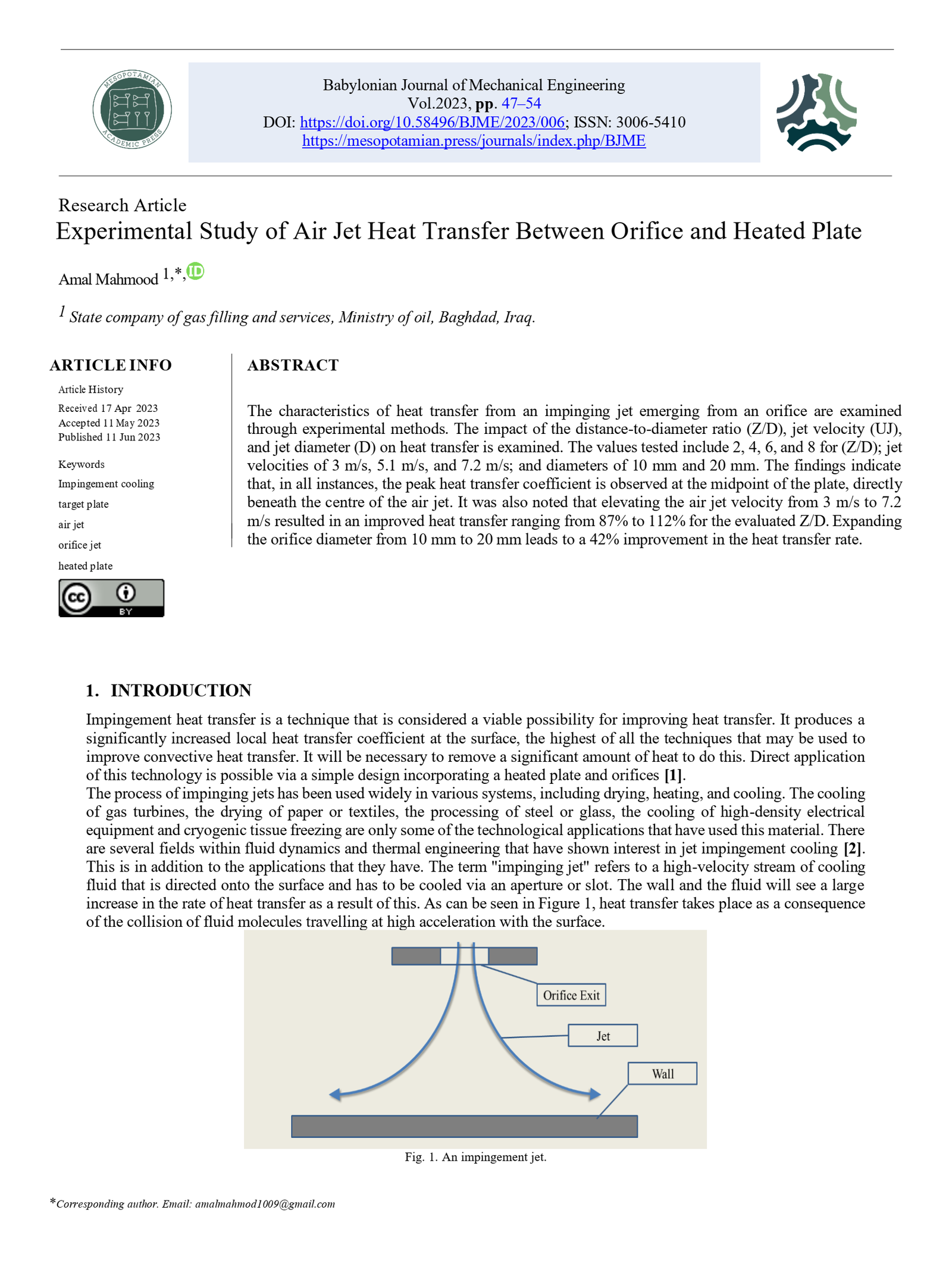Experimental Study of Air Jet Heat Transfer Between Orifice and Heated Plate
Main Article Content
Abstract
The characteristics of heat transfer from an impinging jet emerging from an orifice are examined through experimental methods. The impact of the distance-to-diameter ratio (Z/D), jet velocity (UJ), and jet diameter (D) on heat transfer is examined. The values tested include 2, 4, 6, and 8 for (Z/D); jet velocities of 3 m/s, 5.1 m/s, and 7.2 m/s; and diameters of 10 mm and 20 mm. The findings indicate that, in all instances, the peak heat transfer coefficient is observed at the midpoint of the plate, directly beneath the centre of the air jet. It was also noted that elevating the air jet velocity from 3 m/s to 7.2 m/s resulted in an improved heat transfer ranging from 87% to 112% for the evaluated Z/D. Expanding the orifice diameter from 10 mm to 20 mm leads to a 42% improvement in the heat transfer rate.
Article Details
Issue
Section

This work is licensed under a Creative Commons Attribution 4.0 International License.
